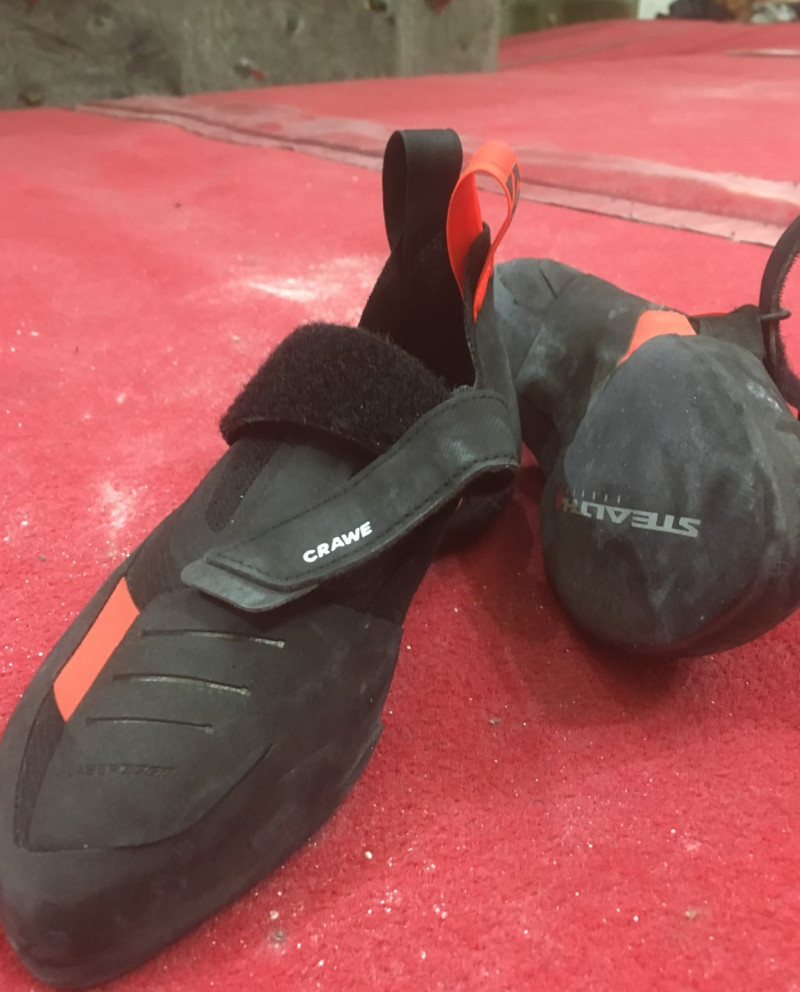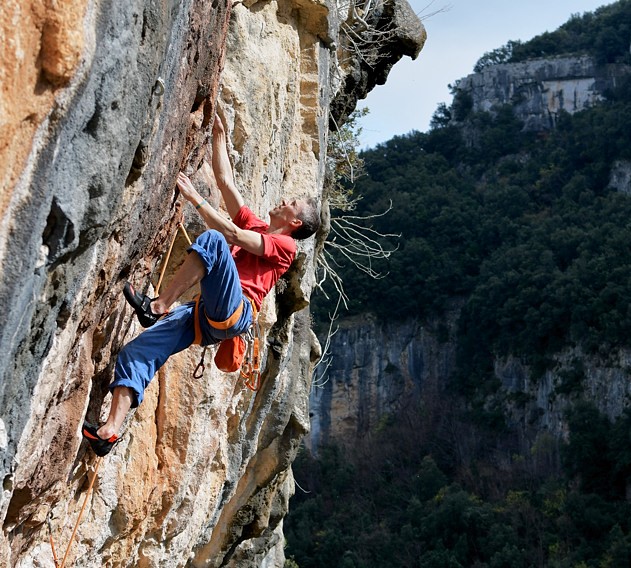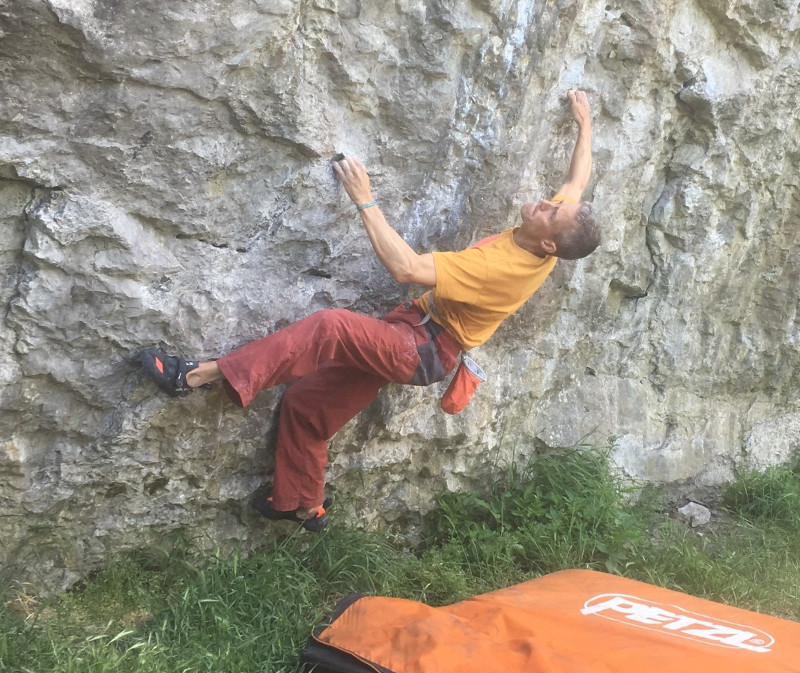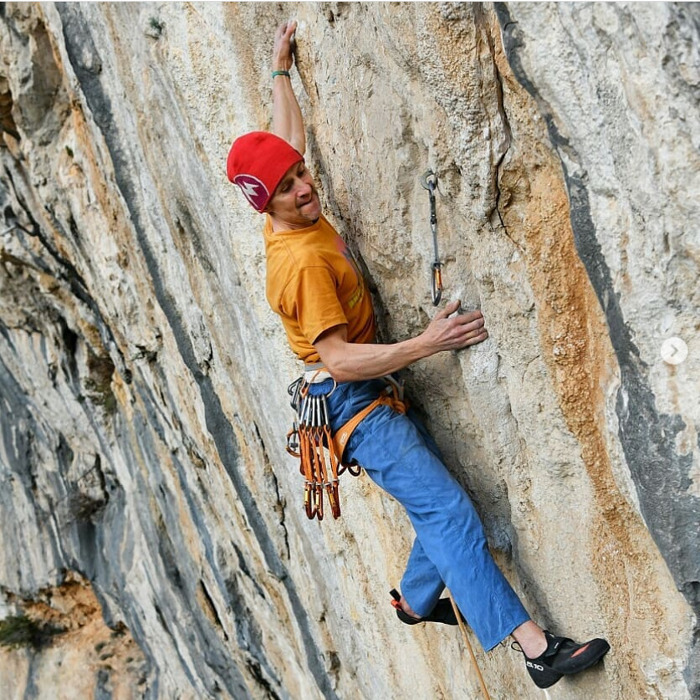A bad workman always blames his tools. We’ve heard that before. But to be fair, it’s hard to do a really good job without the right tools.

We have a bunch of ‘tools’ that help us to climb our best, but none are so important than the shoes we wear. Other than our fingers, these are our contact points and transmit most of our weight, often onto tiny holds where normal street shoes would be utterly useless.
Over the years I’ve worn various types and styles of shoe, but I’m constantly learning about the right tools for the job, and how having the best tools can make all the difference.
Fit is still king. No matter what Chris Sharma or Shauna Coxey wear or say, if the shoes don’t fit your feet you won’t be able to use them well. I’m still surprised by how much people’s feet vary, and how someone’s favourite shoe can be totally useless for another. Feet kind of look about the same, as do climbing shoes, but the differences are massive when it comes to joining them together.
Style is also crucial. What is that shoe designed for? We can be swayed by ‘style’ though; colour, funky shape, what the dudes are wearing… But for any ‘workman’ it’s about choosing the right tool for the job. Down-turned, flat, soft, stiff, aggressive, asymmetric, fastening type; all variations that offer differences in performance for different climbing terrain.

No shoe can do everything really well. Compare the demands of an easy 15 pitch mountain route to a three-move boulder roof problem. But some shoes do work well in many situations. For a long time I was convinced I was wearing a shoe that was as good as it got (for me) and absolutely the most perfect fit (hence no need to even tie the laces).
The new 5.10 Crawe has been a total eye-opener into how having the right tools can make the job easier! Cutting to the chase, there are problems I can do in these that are just so much easier than in any other shoe I’ve ever worn. Admittidley these performance increases come from superb heel and toe design, but these are combined with other attributes that I deem essential and have not found on other ‘cutting edge modern designs’.
So, how do they fit and what are they for? These are the important questions. First of all, note point one above. Fit is everything and the new Crawe won’t fit everyone. However, for those regularly using 5.10 shoes these have a familiar shape. Addidas have this to say:
A SEMI-AGGRESSIVE CLIMBING SHOE FOR BOULDERING AND SPORT CLIMBS.
Bouldering or sport routes, the Five Ten Crawe Climbing Shoes support technical climbing with moderate downturn and medium stiff midsole. The semi-aggressive foot position balances power and comfort.
These comments are about right. The shoe is not hugely aggressive in fit. The heel does not tend to dig into the Achilles. There is mention of moderate down-turn but I feel they are closer to flat in both fit and how they are used. They are medium stiff.

So where will they excel? Firstly I’ve been blown away by their performance on very steep rock, with exceptional heel and toe use. There is rubber (stealth HF on heel) everywhere needed and at the correct thickness so as not to feel clunky but eliminate any pain. Despite the heel not being aggressive, I’ve had no heel-slip at all. The shoes are not really down-turned and climb in a ‘flat’ way, pushing onto holds as opposed to clawing onto them. For the majority of our climbing this is exactly what we need, and this is where I think the Crawe really scores, in that unlike other modern designs, it excels on both the steep stuff and also the vertical walls with tiny edges. They are not super stiff, so allow plenty of feel and some moulding onto polished nubins (think Peak limestone!), but are stiff enough to stand on edges a while before your feet get tired. They are the ideal tool for bouldering and sport routes. Perhaps not quite perfect for long trad onsights. And not the right shoe for long days out on easy terrain.

In terms of fit, these feel fairly unique, though will feel familiar to those used to the 5.10 Anasazi range. However, they feel comfortable, and almost a new level in fit design. There is some ‘give’ at first so size your shoe depending on your requirements. (a tighter shoe will give better performance – within reason!). I take a UK 5 in the old Blanco shoe. With the Crawe I first put on a size 6.5 and it felt great! But after 10 minutes I realised it was too big. I squeezed into a 6, thinking there was no way I’d go smaller, and this size felt awesome once I’d climbed for maybe half an hour. However, I could just sense that maybe another half size down would be perfect. It took me a good few sessions to get the UK 5.5 to be spot on, and now they are perfect. The UK 6 may have been OK too. So that gives a bit of an idea of what size to get (go up a bit on old sizing).
They have now become my go-to shoe. The ones I pick out first. This is surprising for me as I thought I'd found my one and only. For steep limestone or grit bouldering they are great. For redpoints amazing. For sport onsights I'd consider style and length, and for long stuff and trad where I'm gonna be on my feet for like half an hour then maybe I'd choose a different model. I'd not wear these on a multi-pitch in The Lakes.
But I’m no expert. These shoes were designed by Fred Nicole, and he certainly knows his stuff. Fred summed it up by saying The Crawe is the, “Perfect sport climbing shoe” and is currently the shoe he uses the most.
Photos - Keith Sharples. St Cezaire. South of France. (other than the pic of Raventor, which isn't the south of France)
